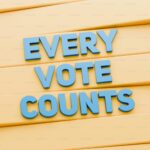Editor’s Note: This week’s guest contributor Tamara Copeland makes real the power of racial trauma for Black people. Sadly, this post was written before the cruel and deadly beating of Tyre D. Nichols and yet vividly reminds us all of the depth and negative power of racial trauma in our country. Tamara is the author of the monthly blog Daughters of the Dream and a book of the same title. After three decades in nonprofit leadership, Tamara states her current mission this way: “My consultancy has one clear area of focus: Introducing leaders and staff to the invisibility of racial inequity and priming them to join the fight for racial justice.”
Just imagine, every day you are poised for something bad to happen. You may not be conscious of the tension, but it’s there. You’re primed for fight or flight. That’s a part of what it’s like to be Black in America.
Sometimes you’re just ready for someone to follow you in a store thinking you’re a thief or for someone to make a disparaging comment about a section of town or to offer the backhanded compliment (microaggression) of how articulate you are. But often you’re waiting for the next big shoe to drop.
I’ve been tense, expecting something bad – some racially motivated event — since 2012, the year that Trayvon Martin was killed. The catalyst wasn’t just Trayvon Martin, it was the series of lost lives that came after his, but there is no doubt that Trayvon Martin was my ground zero. I experienced his death personally, viscerally. It was hard for me to read the news or watch the coverage. My son and Trayvon were born 364 days apart. When I learned of Trayvon’s birthday and the normalcy of that evening when he was killed, I immediately connected my son and Trayvon. My son could have been walking home from the grocery store near our home. Nothing but time, space, and fate caused this to happen to Trayvon and not my son.

While incidents of violence against Black people, especially boys, and men, have always been known and discussed in the Black community, it wasn’t until the years immediately following Trayvon’s murder that we started to regularly see the images. Suddenly, video cameras were everywhere – home and business security cameras, police body cameras and just citizens with their phones. We weren’t only hearing about tragedies; we were watching them, a lot of them, one after another.
Imagine, for example, watching violence happen routinely to women with blonde hair. If you were a blonde woman, maybe you’d choose to wear a wig or dye your hair until the source of the violence was discovered and addressed. As a member of this subset of the white community — blonde and female, you would probably feel confident that the source of the violence would be identified quickly and taken care of.
Now, imagine you are a Black man or boy. You cannot and don’t want to camouflage your skin color or race. The causes of much of the violence you face are already known – racism, prejudice, ignorance, and fear. Unlike the anticipated response to the blonde women, there isn’t a widespread effort to address the causes of violence against the Black community. In fact, some want to ignore the causes, like the response to teaching the entirety of our country’s racial history. Or the response takes an inordinate time (anti-lynching legislation was first introduced in Congress in 1918 and passed over one hundred years later in 2020 following the televised “lynching” of George Floyd). So, there’s little to make the Black community think this violence/trauma will end.
I don’t live in fear for myself, primarily because of my age and my gender, but I do live in fear for my son. He assures me that he isn’t afraid. I hear him, but I believe he carries this fear with him every day, subliminally. He knows that his physical presence alone is causing some white woman to fear him and to know that she can call the police and say a Black man is threatening her and be believed.
This feeling of being in danger or having a loved one in danger is constant for most Black people. It may not be at the surface of one’s day-to-day life, but it’s there. According to all that I read, living with stress – and this fear certainly causes stress, acknowledged or unknown — contributes to high blood pressure, heart disease, obesity, and diabetes, all conditions in which Black people are disproportionately represented.
A few days ago, I was watching the evening news with three friends, two of us were Black, two were white. The anchor began to discuss the death of a Black man, Keenan Anderson, after he was tasered by Los Angeles police officers. The video came on. I averted my eyes. Every time I see another incident, the fear for my son increases. The other Black person in the room didn’t watch either. I guess we’ve both seen enough. We can’t watch the inhumanity against Black people any longer, but I’m glad that our white friends watched. While the images cause me pain, they have revealed our reality to many in white America. But, must our continued pain and death be necessary to open eyes, hearts and minds to the need for change?
This post first appeared on Tamara Copeland’s blog Daughters of the Dream (https://daughtersofthedream.org/) on February 1, 2023 and is reprinted with Tamara’s permission here.
NOTE: This post was written before the murder of Tyre D. Nichols in Memphis.




Thank you for this! I am a soon-to-be 63 year old white woman and while I have never walked a mile in your fear, I have in others. In recovery, there’s. a line in our text that describes fear as, ‘…a corrosive, evil thread that weaves through the fabric of our lives.’ I was traumatized as a child (severe abuse) and that fear, that subconscious fear is what I drank, ate, drugged to suppress. The fear is the same; only the triggers and the symptoms are different. I work with women in recovery (minority women too) and we all share a sisterhood in fear. Fortunately, that sisterhood can become a sisterhood of sobriety for us all.
Thanks Ginger. I appreciate your Shari g your experience and connection to Tamara’s post. Peace, Tom
Following the murder of George Floyd, Dax Devlon Ross, an educator, offered this profound comment to his white male friends, “You experience Black death as repugnant, but not as a visceral, perpetual threat to your own existence and violation of your humanity.”
Tom, I appreciate you sharing this piece. I live by Maya Angelou’s quote, “When you know better, do better” and hope that this insight will prompt others to “do better.”
ThanksTamara, for sharing your experience and helping those of us who are white learn and hopefully know better so we can do better. Tom
Thank you, Tamara for sharing these powerful thoughts.
Thanks Anne for reading and being part of this painful and important conversation. Tom
Thanks, Tamara for putting a laser focus on this discussion. Until we address our universal connection, we are feckless and spinning our wheels. Our Higher Power weeps for the effects of our foolishness as a species.
Thanks Sally. You state our dilemma so clearly and powerfully. Peace, Tom